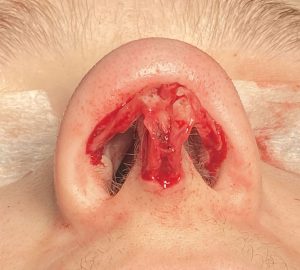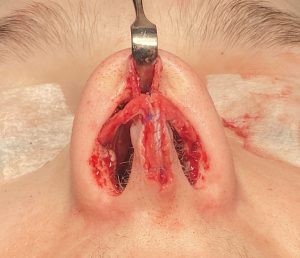Background: The shape of anyone’s nose is a result of the size, shape and thicknesses of its cartilage, bone and skin components. These five pieces of cartilage and two pieces of bone are able to be modified to varying degrees if one wants to change the shape of their nose. How well or poorly these types of structural changes are seen is influenced by the thickness of the overlying skin which is under very little control of the surgeon.
One of the most common parts of the nose that is requested to be changed is that of its tip. While everyone’s nasal shape is different in all aspects the tip is really the ‘fingerprint’ of the nose. The tip is the most complex anatomic part of the nose as the union of three pieces of cartilage, the lower alar cartilages and the anterior end of the septum. The various size and shape of these cartilages is what makes each person’s nasal tip so unique.
While reshaping the tip of the nose is part of many rhinoplasty surgeries as an overall change, the tip cartilages can be treated in isolation as well. For some patients their only nasal shape concerns is in the tip and they are happy with the shape of the nose above it. The tip can have a wide variety of shape issues which primarily revolves around three dimensions, projection, rotation and width. Of these three tip shape concerns width is the most common dimension patients want changed. Men, in particular, focus on nasal tip width more so than tip projection or tip rotation.
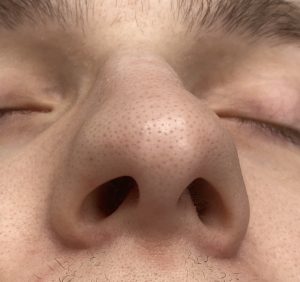
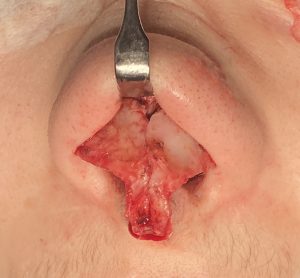
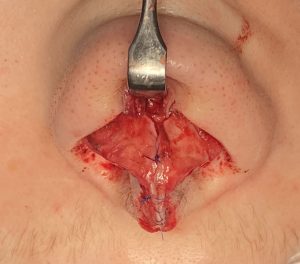
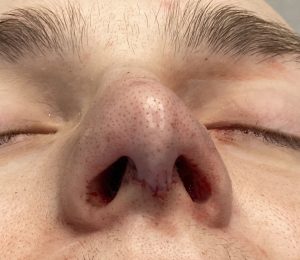
Case Highlights:
1) Narrowing a wide nasal tip requires changing the cartilage structures on the lower half of the nose.
2) In significant nasal tip reshaping the most effective approach is through an open rhinoplasty.
3) An isolated tip rhinoplasty can be done without changing any other aspects of the nose.
Dr. Barry Eppley
Indianapolis, Indiana



